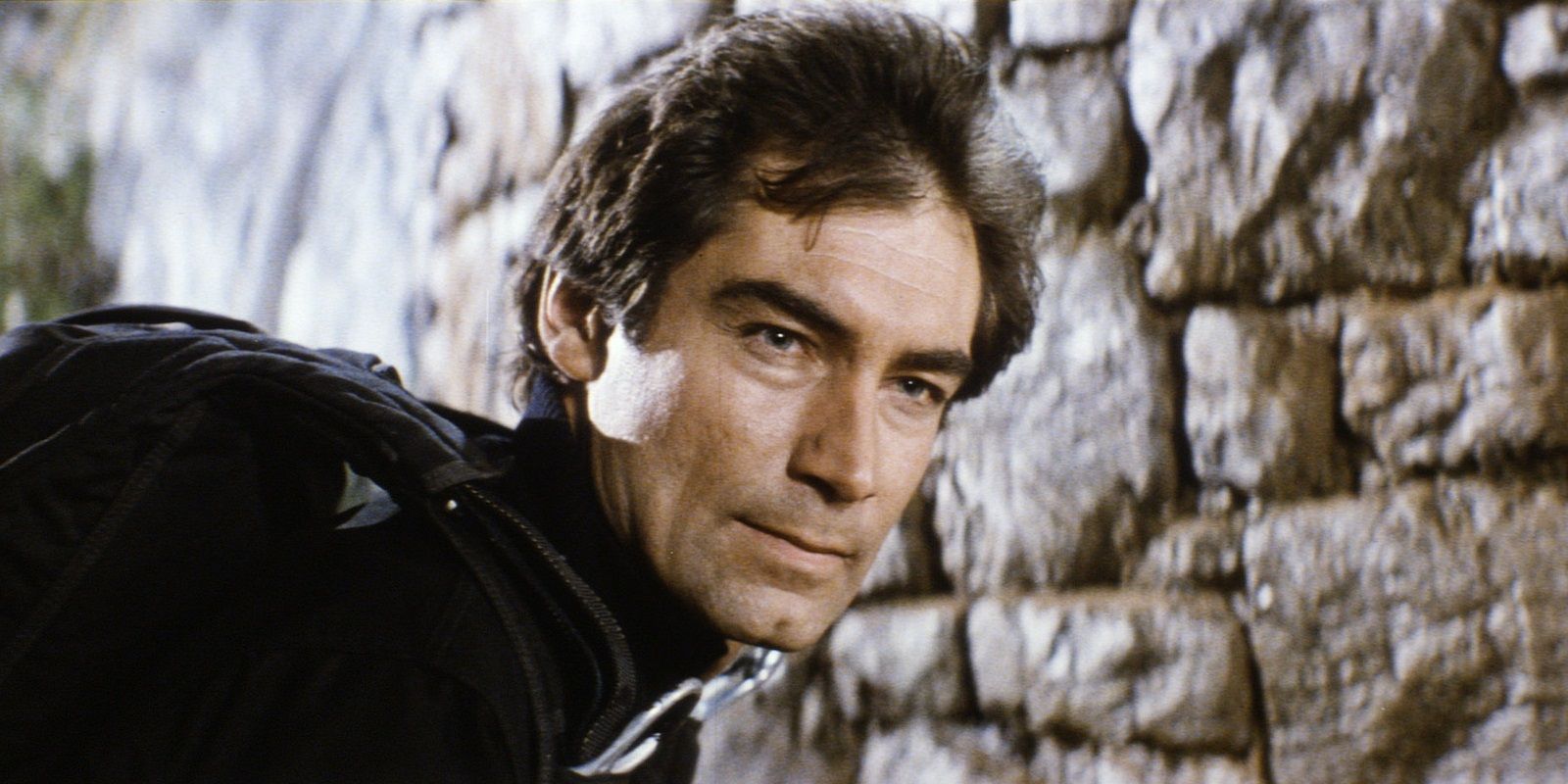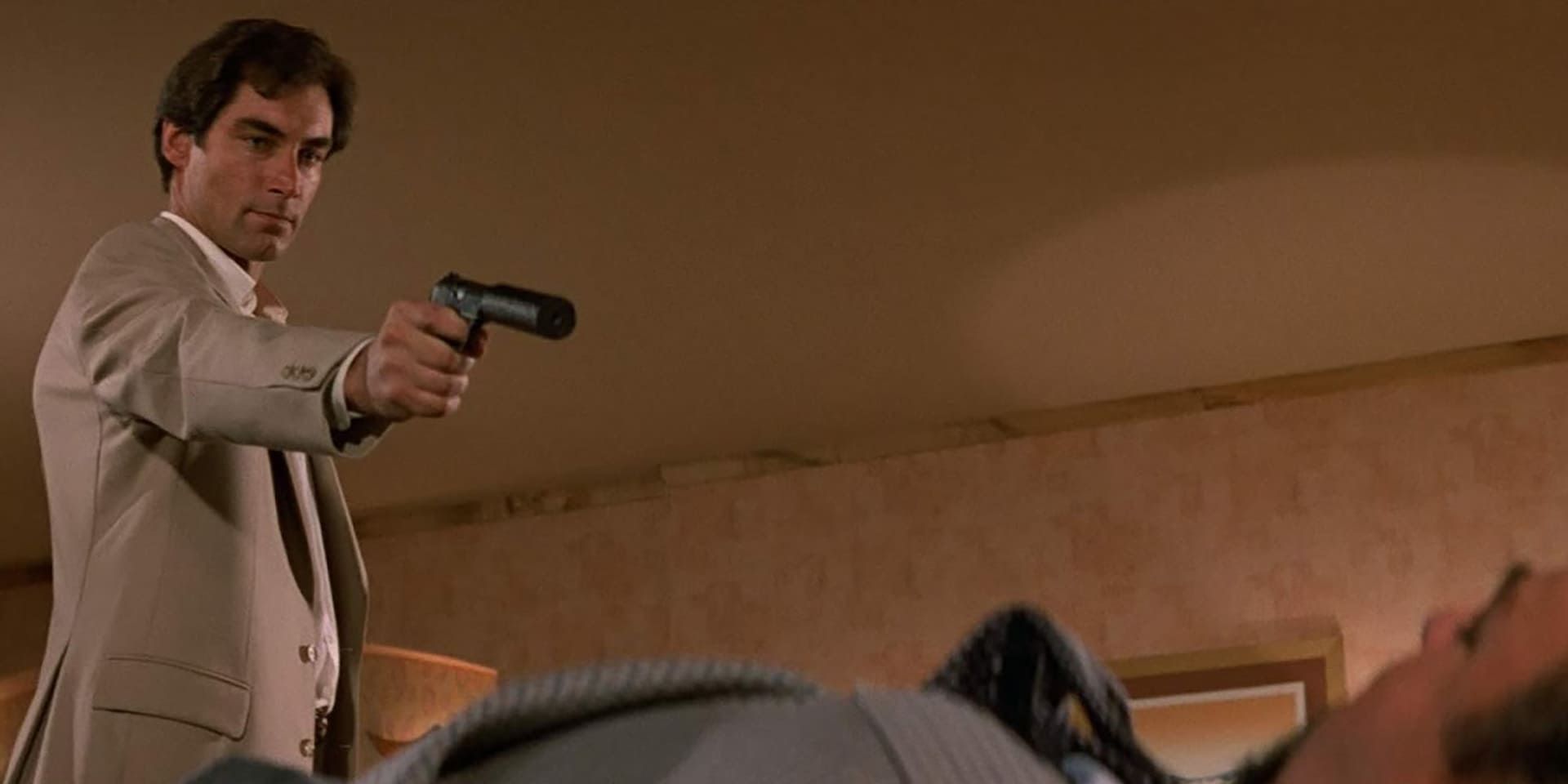When it comes to choosing the best James Bond actor, the first name that’s likely to come up is Sean Connery. As usual, the actor who made the role iconic set a very high bar for all who followed. But Roger Moore’s tongue-in-cheek campness, Pierce Brosnan’s irresistible suaveness, and Daniel Craig’s authentic grit have all been widely praised. In fact, just about every Bond actor is considered a serious contender for the best except for George Lazenby, who only did one movie, and Timothy Dalton, who only did two. The latter’s performance in the role – a darker, more faithful take on the original Ian Fleming character – is easily the most underrated.
Neither of the two Bond movies that Dalton starred in – The Living Daylights and License to Kill – are all-time classics ranking alongside Goldfinger and The Spy Who Loved Me. Unfortunately, the actor brought his A-game to a couple of B-movies. Where On Her Majesty’s Secret Service has a so-so Bond in a great movie, License to Kill has a great Bond in a so-so movie. Not only is Dalton the closest physical match to the Bond that Fleming described on the page – a tall, slim man with short black hair and smoldering eyes – he also plays 007’s behavior and personality more faithfully to the source material than any of his peers.
After the critical panning and box office underperformance of A View to a Kill, the Bond producers and an aging Roger Moore parted ways (some sources say Moore quit, others say he was fired) and the search was on for a new Bond to take over after Moore’s record-holding seven-movie stint in the role. When Dalton landed the role, he didn’t want to emulate his predecessors’ performances, so he looked to Fleming’s books to bring the character back to his roots. In an interview with the New York Times ahead of The Living Daylights’ release, Dalton explained, “On those pages, I discovered a Bond I’d never seen on the screen: a quite extraordinary man, a man I really wanted to play, a man of contradictions and opposites.”
The Bond in the novels is cold and calculating, a million miles from the charming one-liner machine that Moore’s Bond had evolved into. Dalton said that he felt “a sense of responsibility to the work of Ian Fleming” in taking on the role, and collaborated with the producers to characterize the new version of Bond as the ruthless killer he is in the books. This darker, warts-and-all portrait of Bond arrived as a breath of fresh air after the early-to-mid-‘80s downslide of the Moore era had rendered the series stale and conventional.
Dalton’s Bond got the perfect introduction in the pre-credits sequence of The Living Daylights. Usually, these movies open with Bond in the middle of a high-stakes mission, but The Living Daylights sees him embarking on a seemingly harmless Ministry of Defense training exercise with a couple of other 00 agents. While scaling the cliffs of the Rock of Gibraltar, however, 007 notices an assassin picking off his colleagues. He chases the assassin to a Land Rover full of explosives and hangs off the roof as they race around the treacherously narrow mountain roads, showing he’ll recklessly endanger his own life in the pursuit of justice. When the car takes flight, Bond manages to escape with his reserve parachute while the assassin is blown up in the Land Rover in mid-air. He lands on a woman’s yacht, uses her phone to call in air support, and then pushes back air support another hour when the woman shows interest in sleeping with him. Then, the opening credits begin and Dalton’s brooding 007 is brilliantly established.
The globetrotting espionage antics of Dalton’s 007 were depicted in a much more realistic manner than the average ludicrous Bond plot. Casino Royale would later be lauded for grounding the Bond franchise in gritty realism, but the short-lived Dalton era already did that. Dalton’s Bond acted on his own authority, following his own judgment, which resulted in more morally challenging stories than fans were accustomed to. Dalton did a lot of his own stunts – unlike Moore, whose stunt doubles could be spotted from a mile away – and his love interests had a lot more agency than the average Bond girls. None of the romantic scenes in Dalton’s movies have the problematic overtones that most of the other movies do, because his Bond was actually interested in connecting with women instead of objectifying them.
Most incarnations of Bond are stony-faced and unemotional, brushing off murders with a dry, well-timed quip. But Dalton’s 007 exhibited a wide range of emotions – anger, fear, regret, warmth – that make him feel more human. In a 1989 interview archived in The Complete James Bond Movie Encyclopedia, Dalton explained why he felt the need to humanize Bond: “If you want to believe in the fantasy on-screen, then you have to believe in the characters and use them as a stepping stone to lead you into this fantasy world. That’s a demand I made, and [producer] Albert Broccoli agreed with me.”


